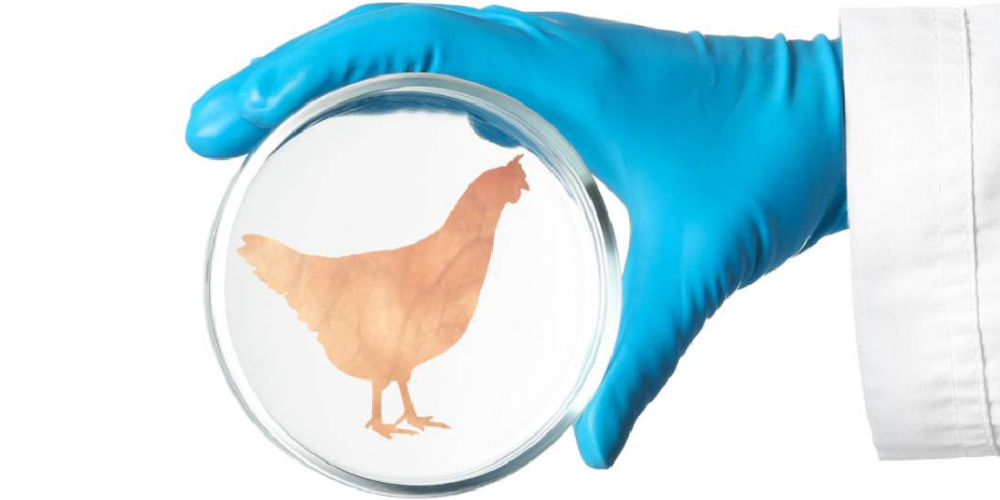A*STAR NEWS
FEATURES
Alternative Proteins: Can they boost Singapore's 30 by 30 and our chicken supply?
By Dr Andrew Wan, Principal Investigator at the Singapore Institute of Food andBiotechnology Innovation (SIFBI)
- Alternative proteins could be part of a longer-term solution to meeting Singapore's food security goals
- Along with the local R&D ecosystem, A*STAR is advancing the development of sustainable future-ready foods that are tasty and nutritious
- These efforts help strengthen our resilience against external factors that impact our food supply

The Malaysian government’s recent decision to halt the export of chickens has served as a reminder of Singapore’s dependence on imported food. In addition to looking at increasing imports of chicken from other sources, the Singapore Food Agency (SFA) has also urged consumers to consider frozen chicken as well as other meat products.
These may help rectify the immediate problem, however, if such a scenario repeats itself in the future, as it almost certainly will, what other options have we got? Can alternative proteins be part of a longer-term solution? Can chicken meat grown from cells or constructed from plant proteins someday replace farmed chicken, thus addressing Singapore’s food security needs?
Securing a supply for chicken is only part of the bigger picture in Singapore’s food security endeavour. The everchanging geopolitical landscape makes it essential for every nation to secure its food resources. Besides Malaysia’s chicken export ban, other recent events serve as reminders for us to continue working on food security. The war in Ukraine has impacted the global supply of commodities ranging from wheat to oil, and in response, other countries have acted to secure their domestic supply by restricting exports. Against this backdrop, countries that are nett importers of food and agricultural inputs (such as fertilisers) cannot assume that their imports will carry on undisrupted. Currently importing about 90% of its food, Singapore has wisely decided to ramp up local food production, with a target of producing 30% of our nutritional needs locally by 2030.
Targets have been fixed for some food items- in particular, eggs, fish and leafy vegetables. Efforts to achieve these targets seem to be gaining ground, especially with the practice of advanced agricultural technologies such as vertical farms and sustainable aquaculture. Nowadays, it is not uncommon to find local produce at our supermarkets, coming directly from our local farms. For the meat items however, the measures to secure production are not as straightforward. In the 90s, a deliberate decision was made to stop local rearing of pigs due to issues of waste and land usage. While poultry farms still exist, these are unlikely to see any great expansion. With no desire to resume animal agriculture, the only option would be to ramp up the production of alternative proteins. The latter term refers to proteins from alternative sources- examples include plants, microalgae and cell-based, or cultivated meat.
Critical questions to address would be: how well do these alternative proteins serve as substitutes for meat, and will they be able to practically contribute towards the shortfall in meat production to achieve Singapore’s 30 by 30?
This brings us back to the question of whether cell-based chicken would be able to replace the chicken grown on farms.
First of all, let us look at how chicken can be grown from cells. To make cell-based chicken, a starter culture, which may comprise a small quantity of muscle stem cells, is grown in a vat. Under the right conditions and with provision of suitable nutrients, these cells will continue to divide indefinitely to generate trillions of muscle cell progeny. Once sufficient numbers of cells have been grown, they are then moulded together using other food ingredients to form the final product- the chicken nuggets and fillets that consumers are familiar with.
In reality however, it is not a 'one for one' replacement. For now, no one has been able to exactly replicate the structure of chicken muscle. As muscle is a tissue with different levels of structure, that would require more than just putting together a large number of muscle cells. As a result, neither the texture nor nutritional value of cell-based chicken can be assumed to be exactly the same as that of farmed chicken..
The cost of production and therefore, the price of the product, is another factor that would bear greatly on the ability of cell-based chicken to effectively replace farmed chicken.
If cultured chicken lacks the texture and nutrition of chicken as we know it, and costs a lot more, would consumers bite?
The scenario for cell-based chicken or meat in general, is comparable to that for plant-based meat, although the latter has been around for longer. The issue of product availability and the willingness of consumers to alter their diet, substituting animal products for plant-based ones, still looms at large. For example, according to a Good Food Institute report, plant-based meat sales1 constituted only 0.056% of the total meat sales in Singapore in 2020. Assuming that this trend applies to chicken, this means that plant-based chicken contributed only about 100 metric tons, out of the roughly 200,000 metric tons of chicken consumed in Singapore that year. Seen in a positive light, however, this also means that just by increasing their availability and consumer acceptance, alternative proteins such as cell-based or plant-based meat have the potential of significantly making up for the meat shortfall in a practical way.
Here, Singapore has been making significant strides, especially where cultivated meat is concerned. Having become the first country in the world to grant regulatory approval to a cultivated meat product, Good Meat, it would now be housing the largest facility in Asia to produce the same. Earlier in June, 2Good Meat held its groundbreaking ceremony for the S$61 million R&D and production facility at Bedok Food City.
What can local R&D do to help realize the potential of alternative proteins as a substitute for animal meat, especially in the context of Singapore’s 30 by 30 target? A lot, apparently. Since 2021, the Singapore Food Story R&D Programme has been providing funding support for research projects in sustainable urban food production, future foods and food safety science and innovation.
These grant calls for R&D in sustainable urban food production and future foods will help to encourage researchers, technology providers, and potential adopters to co-develop innovative solutions for the alternative protein industries.
For example, scientists at A*STAR’s Singapore Institute of Food and Biotechnology Innovation (SIFBI), together with colleagues from other A*STAR research entities, are developing new animal-free technologies to grow cells, that may eventually bring down the cost of cultivated meat. Food process engineers are applying texturization methods on proteins from alternative sources, to transform them into fibrous products of meat-like appearance and mouthfeel. Concerted efforts are being made to measure, and hence improve the digestibility, nutritional and sensorial characteristics of the proteins. All of this is being done with the aim of matching, if not bettering, the properties of what we know as meat.
These efforts are expected to contribute to Singapore’s food security and serve up sustainable future-ready foods that are tasty and nutritious. If another chicken export ban looms up in the not too distant future, let us hope that local consumers will be unfazed, telling themselves calmly that ‟we’ll just have to go cell-based or plant-based for now”.
Was the article helpful?
A*STAR celebrates International Women's Day

From groundbreaking discoveries to cutting-edge research, our researchers are empowering the next generation of female science, technology, engineering and mathematics (STEM) leaders.
Get inspired by our #WomeninSTEM
